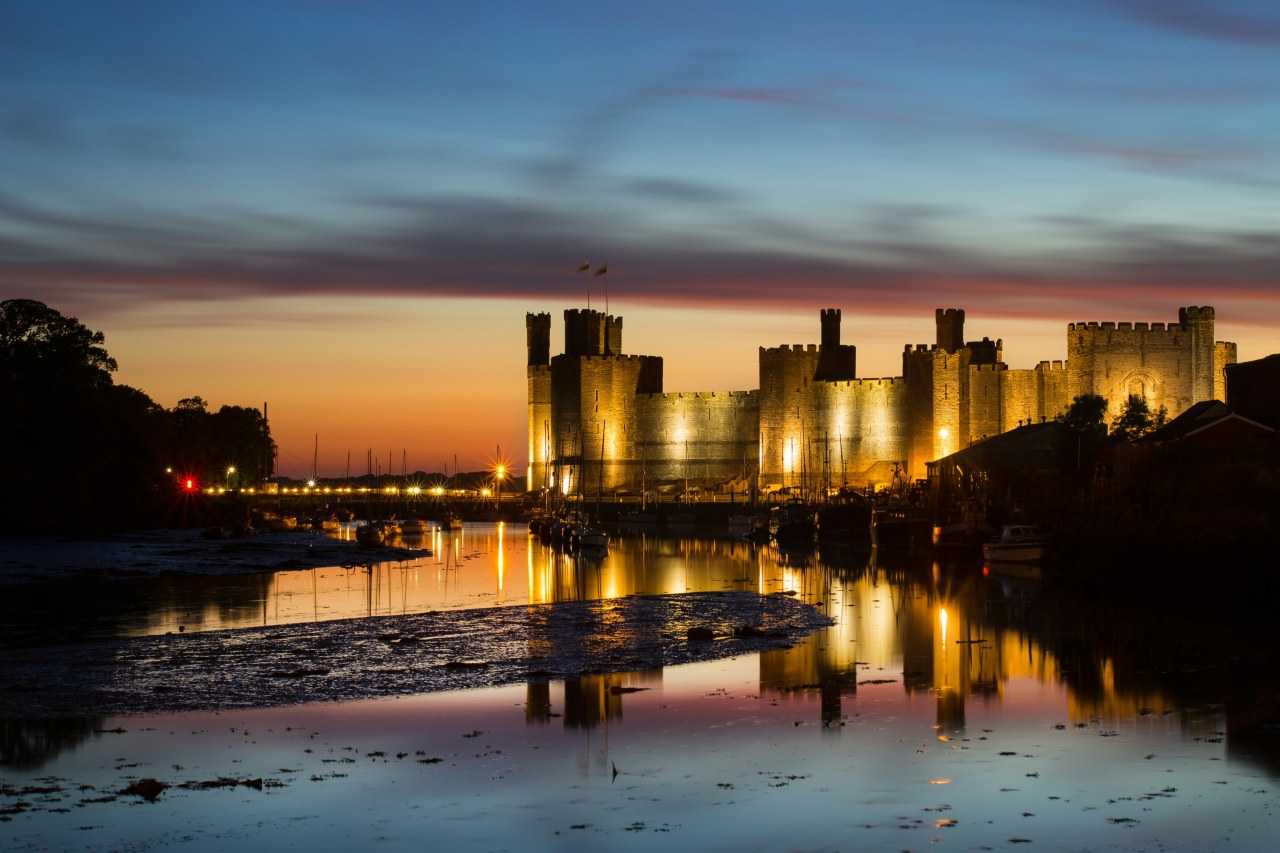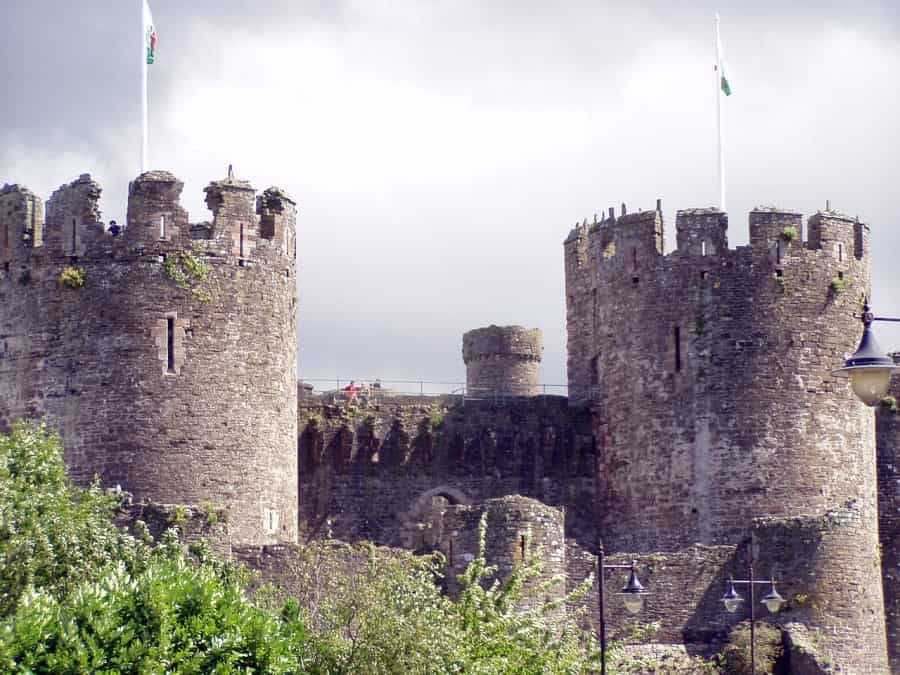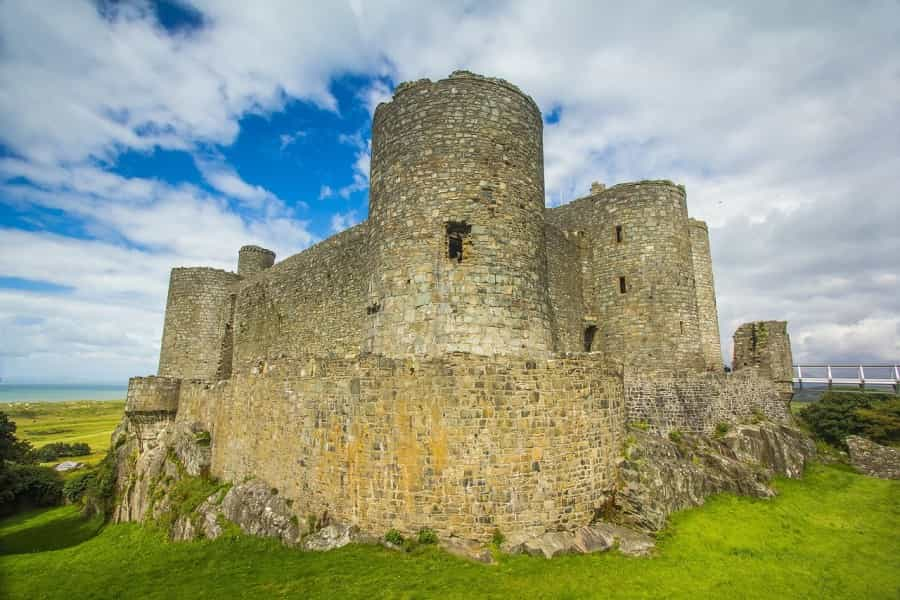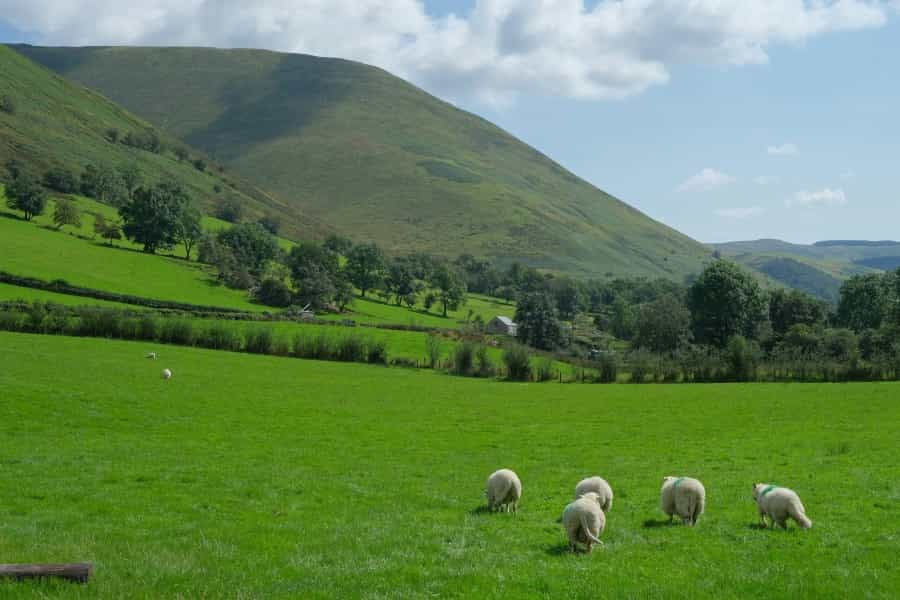Cultural Highlights of Eryri National Park

The rugged landscapes of Snowdonia National Park have been shaped by settlers since Iron Age times, and today the area's wild natural beauty combines with a cultural richness to form a deep-rooted love for and celebration of Welsh heritage. You could easily keep yourselves occupied for weeks deciding which of the region’s iconic landmarks to see, so Pitchup has done all the hard work and picked out the best of the bunch for you.
Historic landmarks
From prehistoric sites to medieval castles and the slate mines of the Industrial Age, Eryri’s rich history is defined by the hand of man. Here’s where to discover the very best of Snowdonia’s heritage.
Prehistoric settlements
There are numerous prehistoric cairns and burial chambers in the national park, most of them open to visit at any time free of charge. Combine your history tour with a walk through stunning mountain scenery.
Bryn Cader Faner is a vast Bronze Age cairn with an inner pile of rocks punctuated by standing stones. The remote location near the hamlet of Talsarnau is part of its charm; be sure to admire the spectacular Rhinogydd Mountains when you visit.
The Neolithic burial chamber at Capel Garmon is accessed by a short walk across farmland near Betws-y-Coed (please keep any dogs under control and don't stray from the designated path). Topped with a massive slab of slate, the chamber is surrounded by a scattering of stone circles.
Medieval castles
The four mighty castles built by English King Edward I in the 13th century are among the most beautiful and historically important in Wales’ centuries-long battles against English supremacy. Collectively forming a UNESCO World Heritage SIte, they stand outside the confines of Eryri’s boundaries, but are nevertheless within easy driving distance and beckon visitors with their impressive architecture and equally impressive backstory.

Conwy Castle
You can follow a full circular tour (some of it on steep stone staircases) of splendid, partially restored Conwy Castle, which dates from 1287 and was the first of Edward’s defence castles to be completed. It’s also home to the most intact set of medieval royal apartments in Wales as well as eight lofty towers and a vast curtain wall.
Harlech Castle
This magnificent edifice on its rocky crag was completed in 1289, just seven years after construction began. It’s the only one of the four castles mentioned here that's actually sited within the national park. With a breathtaking backdrop of Snowdonia peaks from its battlements and towers, the castle also has an interactive visitor centre where you can learn more about its turbulent history.

Caernarfon Castle
Overlooking the River Seiont, the royal stronghold of Caernarfon was built at the same time as the town walls and a quay; it was finally finished in 1330 after some 50 years of construction. Stroll the walls, visit the Eagle Tower where kings and queens once slept, take part in regular medieval reenactments, and have a peek at the military displays in the Royal Welch Fusiliers Museum.
Beaumaris Castle, Isle of Anglesey
The final link in Edward’s line of seemingly impregnable military fortresses but never completed, stunning Beaumaris Castle is surrounded by a moat and offers gorgeous views down the Menai Strait. Today the castle is open for tours of its ramparts and courtyards, and medieval-themed jousting festivals are held within its walls.
Slate mines
Both the history and landscape of Snowdonia were shaped by slate mining. To learn about the area's mighty industrial heritage, follow the 83-mile/134 km Snowdonia Slate Trail, which takes in abandoned towns and villages, disused quarries and remote trails through the mountainous countryside.
If you don’t have enough time to follow the whole walk, dip into the history of slate mining at the National Slate Museum, housed in the Victorian-era workshops that once supported Dinorwig Quarry. Talks, films, exhibitions and hands-on courses as well as slate-splitting displays are designed to give you a taster of life as a Welsh slate miner in the late 19th century.
You can also take underground tours of Llechwedd or Llanfair slate caverns to witness the conditions in which Victorian slate miners worked.
Local traditions and heritage
Eryri's scattered communities are mightily proud of their vibrant immersion in the Welsh language and long-standing traditions that celebrate the region’s industrial past.
Welsh language and culture
In 2023, the national park authority announced that Snowdonia would be officially returning to its Welsh name, Eryri, to reflect the fact that Welsh is the first language for more than half the park’s residents. Steeped in history – it is the tongue of medieval leaders like Llywelyn the Great and Owain Glyndŵr – Welsh may be one of Europe’s oldest languages, but to this day it is the language of everyday life in the national park, as can be seen in local place names and in its history.
The continued use of Welsh is vital to the region’s cultural heritage, and happily today it is being enthusiastically taken up by younger people. The language is taught in schools and used in shops, pubs and businesses. It has always been the language of song, adopted by male voice choirs and eisteddfods the country over, but Welsh has also now been integrated into the country’s thriving rock, pop and folk scene. To ensure its survival, the language now has protected status in Welsh government legislation.
Wool weaving
Just as the Welsh language is integral to Snowdonia’s cultural heritage, so is the national park’s tradition of wool weaving. If you’d like to take some traditional Welsh blankets or bedspreads home with you, Trefriw Woollen Mills – established in 1859 on the banks of the River Crafnant and still going strong – is the place to go, where you can also watch the process of turning fleeces into textiles. Learn more about this delicate craft on ‘Walking and Weaving’ courses held in the park during spring.

Art in Snowdonia
Snowdonia’s spectacular landscapes have long inspired art of all kinds, with artists local and international being drawn into the park to immortalise its beauty on canvas.
Art galleries
Famous landscape artists showcasing the rugged beauty of the park include J.M.W. Turner, who painted at Dolbadarn and Llanberis, and Richard Wilson, who repeatedly memorialised Snowdon and Cadair Idris in his work. You’ll find modern works featured in galleries throughout the national park.
MOMA Wales, Machynlleth
Right on the southern fringes of the park, MOMA has seven light-filled galleries in a beautifully converted former chapel. The permanent collection highlights the sophistication of the Welsh arts scene with depictions of rural life by John Lavrin and wildlife paintings by Terence Lambert among many others.
Alison Bradley Gallery, Chester
Although based outside the park, Alison is one of the foremost contemporary watercolourists highlighting the evocative landscapes of Eryri and its icons; you can buy her exquisite paintings and charcoals online.
Galeri, Betws-y-Coed
Supporting local talent with its ever-changing displays of paintings, prints and photography by well-known or budding Welsh artists, Galeri also stocks contemporary Welsh ceramics.
Oriel Gallery, Barmouth
Family-run Oriel Gallery features the work of a number of artists based in or near Snowdonia, with a range of paintings and cards to suit all budgets.
Oriel Tŷ Meirion, Dyffryn Ardudwy
Another gallery showcasing local artists, the displays at Oriel Tŷ Meirion span photography, watercolours, embroidery and jewellery – look out for the eye-catching images of local Eryri birdlife by printmaker Ian Philips.
Royal Cambrian Academy, Conwy
Established in 1882 in Conwy, the gateway to Snowdonia, the Royal Cambrian Academy is an independent charity backing Welsh art and artists. Its roster of temporary exhibitions features professional artists with a connection to Wales through birth, lineage or residence.
Music festivals and cultural events
A love of performance and song is at the very beating heart of Eryri culture; here’s where to catch a piece of the musical action and enjoy a gag a minute at a comedy gig.
Wales Harp Festival, March
Hear harpists at the peak of their skills as they play Wales’ national instrument, or take part in the Caernarfon musical extravaganza during hands-on harp courses for all ages and abilities.
Good to know: Just outside the northern reaches of the national park, Caernarfon makes a great base for exploring the beaches, ancient sites and castles of the Isle of Anglesey.
Machynlleth Comedy Festival, May
A top-quality line-up of Welsh and international comedians strut the stage at the small-scale Machynlleth Comedy Festival, which spreads across a series of intimate venues around the town. There are some shows that are family-friendly, while others are strictly for over-18s, so always check carefully before booking a performance if you’re with the kids.
Sesiwn Fawr, July
A leader on the ‘Cool Cymru’ alternative music scene, Sesiwn Fawr sees the best of Welsh folk and rock music, dance and performance brought to the streets of Dolgellau. You can join jamming sessions and sing-songs in every pub, get the kids to take part in activities like storytelling and look out for appearances by homegrown superstars Cerys Matthews and Super Furry Animals.
The National Eisteddfod, August
This major cultural festival – believed to be the biggest in the world – celebrates Welsh culture, music and literature. Held in Snowdonia in 2023, it is peripatetic so you’ll need to keep an eye on the National Eisteddfod website to see when it is returning to the national park.
Culinary heritage
Traditional Welsh food is all about the coast and the countryside, with a strong historic tradition of living off the land on simple dishes made with quality ingredients for farmers, quarry workers, coal miners and fishermen. Notable local produce includes sweet and tender Welsh lamb grazed on abundant grasslands and line-caught seafood.
Snowdonia has its own name for the famous Welsh dish of cawl – a salted bacon or beef broth rich in seasonal vegetables. With its origins in the 18th century, ‘lobsgows’ is often served with chunks of bread in a wooden bowl.
If you’ve got a sweet tooth, you’ll be happy in the national park too, with its proliferation of tea rooms and cafés serving bara brith fruit loaf and Welsh cakes spiced up with currants and mixed spice.
Celebrate Snowdonia’s rich gastronomic traditions on the Snowdonia 360 Food Trail, designed to lead foodies to some of the region’s best restaurants and pubs, along with family businesses producing gourmet cheeses, dry-cured meats and ice cream.
Good to know: You can sample Welsh chutneys, honeys and Perl Wen cheese in the farm shop, restaurants and cookery school at Bodnant Welsh Food, on a farm by the River Conwy with the National Beekeeping Centre of Wales based in the courtyard.
Food festivals
If you’re keen to learn more about Eryri’s superb artisan food and drinks, make sure the following dates are in your diary.
Conwy Honey Fair, September
One of the town’s oldest events, the Conwy Honey Fair dates back at least 700 years. Local beekeepers flock in to display their precious wares for tasting and sale.
Wales Whisky Fest, November
Having its first outing in 2024, Wales Whisky Fest features international brands as well as Welsh single malts. Tours of Penderyn and Aber Falls distilleries are included in the ticket price.
Portmeirion Food and Craft Fair, December
Need some Christmas stocking fillers? This family-friendly Portmeirion fair showcases the very finest of regional produce and crafts, and provides a hefty dose of entertainment as well, with live concerts and trips to Santa’s grotto on a mini train.
There’s so much history and culture to explore and learn about in Eryri National Park, from the evocative landmark castles to the creativity of the region’s artists and the burgeoning strength of its native Welsh language. Should you need somewhere to stay in the national park, check out Pitchup’s list of Eryri campsites or perhaps splurge on a glampsite for a more luxurious experience.
Pitchup also has campsites all across Wales, some of which are open all year.